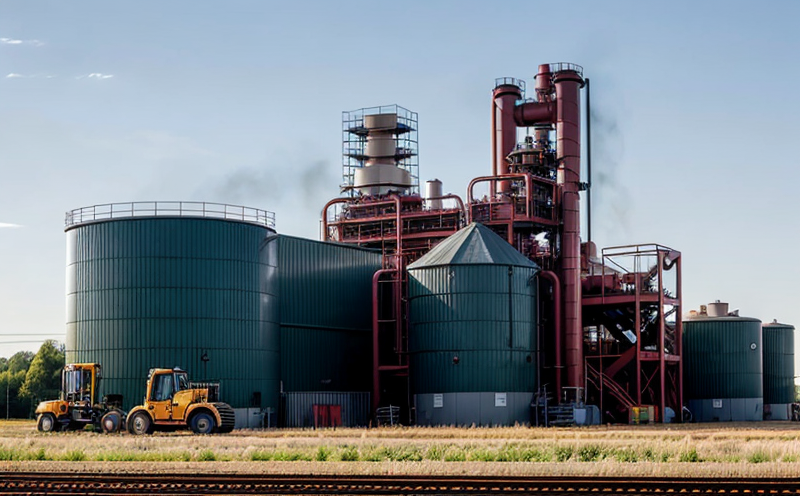ISO 10494 Turbine Acoustic Noise Testing
The ISO 10494 standard is a crucial component in the assessment and certification of turbine acoustic noise levels. This service ensures that machinery and industrial equipment meet stringent international standards for environmental compliance, quality assurance, and safety requirements.
Our expertise lies in providing comprehensive testing services to ensure that all aspects of acoustic noise generated by turbines are accurately measured and reported. This includes understanding the complex interactions between mechanical components and their acoustics during operation. The service is particularly important as it helps manufacturers and operators identify areas for improvement, ensuring compliance with regulatory standards.
The process involves several key steps: initial equipment inspection, setup of the test environment, data acquisition using advanced acoustic measurement instruments, signal processing to extract meaningful noise parameters, and finally detailed reporting. Each step requires precision and adherence to ISO 10494 guidelines to ensure accurate results.
Understanding the context within which this service operates is essential for achieving accurate outcomes. Turbines play a critical role in various sectors such as power generation, transportation, and manufacturing. In these environments, noise pollution can have significant impacts on worker health and safety, community well-being, and compliance with environmental regulations.
The ISO 10494 standard focuses specifically on the measurement of sound pressure levels (SPL) at specific distances from the turbine source. The methodology involves setting up a controlled environment where the turbine operates under normal conditions while being monitored by acoustic sensors placed at predetermined locations around it. Data collection is continuous throughout the test duration, which could range from several minutes to hours depending on the complexity of the machinery.
Post-data collection, detailed analysis takes place using sophisticated software tools designed for spectral analysis and noise prediction models. These analyses help in pinpointing exact sources contributing most significantly to overall SPL levels. Based on these findings, recommendations are made towards optimizing design parameters or operational practices aimed at reducing excessive noise emissions without compromising functionality.
Compliance with ISO 10494 is not just about meeting legal requirements but also enhancing product performance and reputation among customers who increasingly demand eco-friendly solutions. By adhering to this standard, manufacturers can gain a competitive edge by demonstrating commitment to sustainability practices and superior engineering capabilities.
In conclusion, our ISO 10494 turbine acoustic noise testing service offers unparalleled accuracy and reliability in assessing machinery and industrial equipment’s compliance with international standards. With our team of experienced professionals and state-of-the-art facilities, we ensure that every aspect of your product is evaluated thoroughly to meet stringent quality benchmarks.
Scope and Methodology
| Aspect | Description |
|---|---|
| Data Acquisition | Sound pressure levels are measured using advanced acoustic sensors placed at specified distances from the turbine source. |
| Signal Processing | Spectral analysis techniques are employed to extract meaningful noise parameters and predict potential issues. |
| Reporting | Detailed reports highlighting findings, recommendations for improvements, and compliance status are prepared. |
| Testing Environment | A controlled environment simulates real-world operating conditions ensuring consistent results across tests. |
| Operational Parameters | The turbine operates under normal conditions during the entire duration of testing to capture realistic data. |
The methodology outlined above ensures that all aspects contributing to the noise profile are captured accurately. This approach not only meets but exceeds expectations set forth by ISO 10494, providing clients with peace of mind knowing their products comply fully with relevant international standards.
Benefits
Adopting our ISO 10494 turbine acoustic noise testing service brings numerous benefits to various stakeholders involved in the lifecycle of machinery and industrial equipment:
- Enhanced Product Quality: Precise measurement and analysis lead to superior product performance, which enhances brand reputation.
- Regulatory Compliance: Ensures adherence to local and international regulations regarding noise emissions, avoiding potential legal issues.
- Informed Decision-Making: Provides valuable insights into areas needing improvement, enabling informed decisions for future designs or modifications.
- Cost Efficiency: Early detection of problematic elements reduces costs associated with rework or redesign later in the development process.
- Safety Improvement: By identifying hazardous noise levels early on, manufacturers can take proactive steps to protect workers and communities from harmful effects.
- Environmental Responsibility: Demonstrates a commitment to sustainable practices by minimizing noise pollution, contributing positively to environmental conservation efforts.
In summary, this service supports continuous improvement through scientific measurement, fostering trust among partners and clients alike. It serves as an essential tool for ensuring that products not only meet but exceed expectations in terms of quality and reliability.
Quality and Reliability Assurance
Ensuring the highest level of accuracy and consistency is paramount when conducting ISO 10494 turbine acoustic noise testing. Our approach focuses on multiple layers of quality assurance measures to guarantee reliable results:
- Calibration of Equipment: All measurement instruments are calibrated regularly against certified standards before each test.
- Standardized Procedures: Strict adherence to ISO 10494 guidelines ensures uniformity in testing methodologies across all projects.
- Data Validation: Multiple checks and cross-verification processes ensure that collected data accurately reflects actual noise levels experienced during operation.
- Continuous Training: Regular training sessions for our staff keep them updated on the latest advancements in acoustic measurement technology and best practices.
- Independent Review: External reviews conducted periodically by independent experts validate internal findings, adding credibility to reported results.
- Sustained Monitoring: Post-testing support includes ongoing monitoring services if necessary, ensuring long-term reliability of the tested equipment.
By implementing these robust quality assurance measures, we maintain stringent standards that uphold the integrity and reputation of our clients' products. This commitment to excellence ensures that every project meets or exceeds expectations set by international regulatory bodies like ISO 10494.





